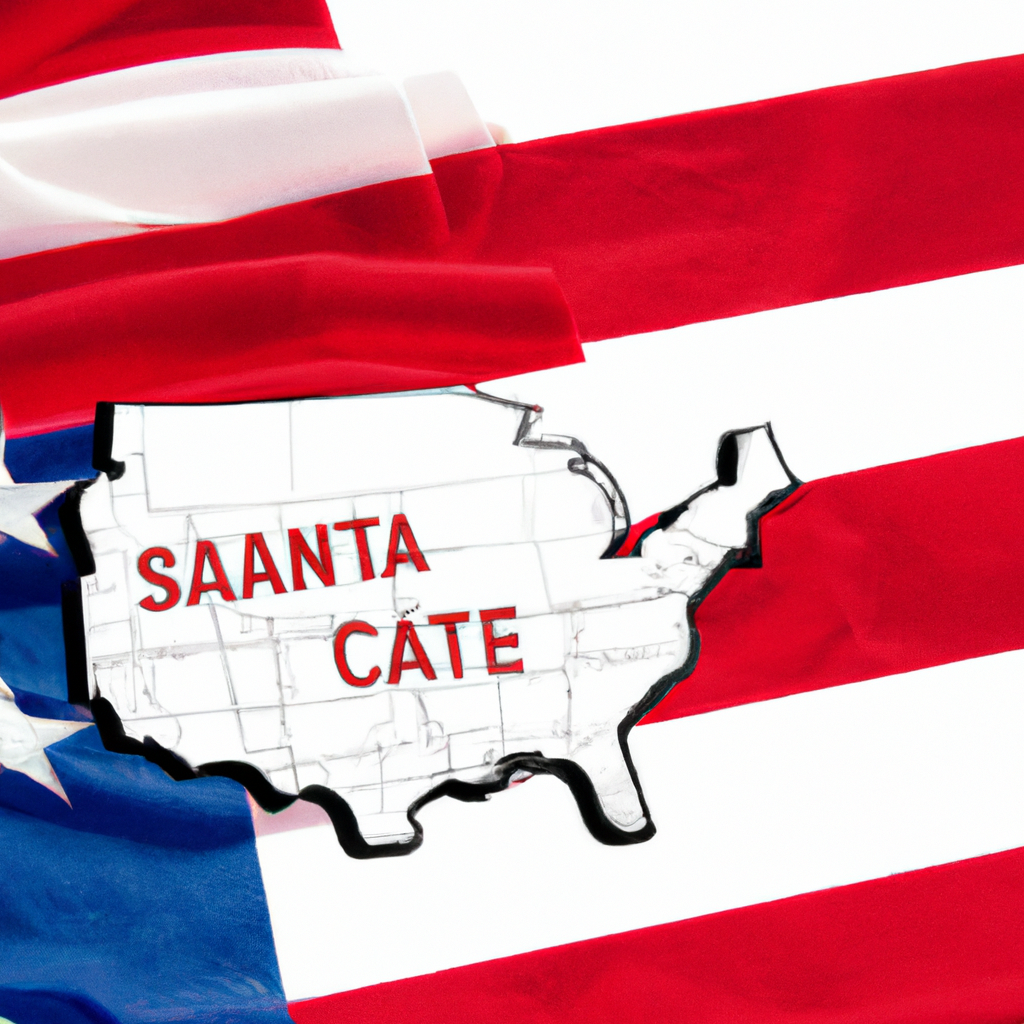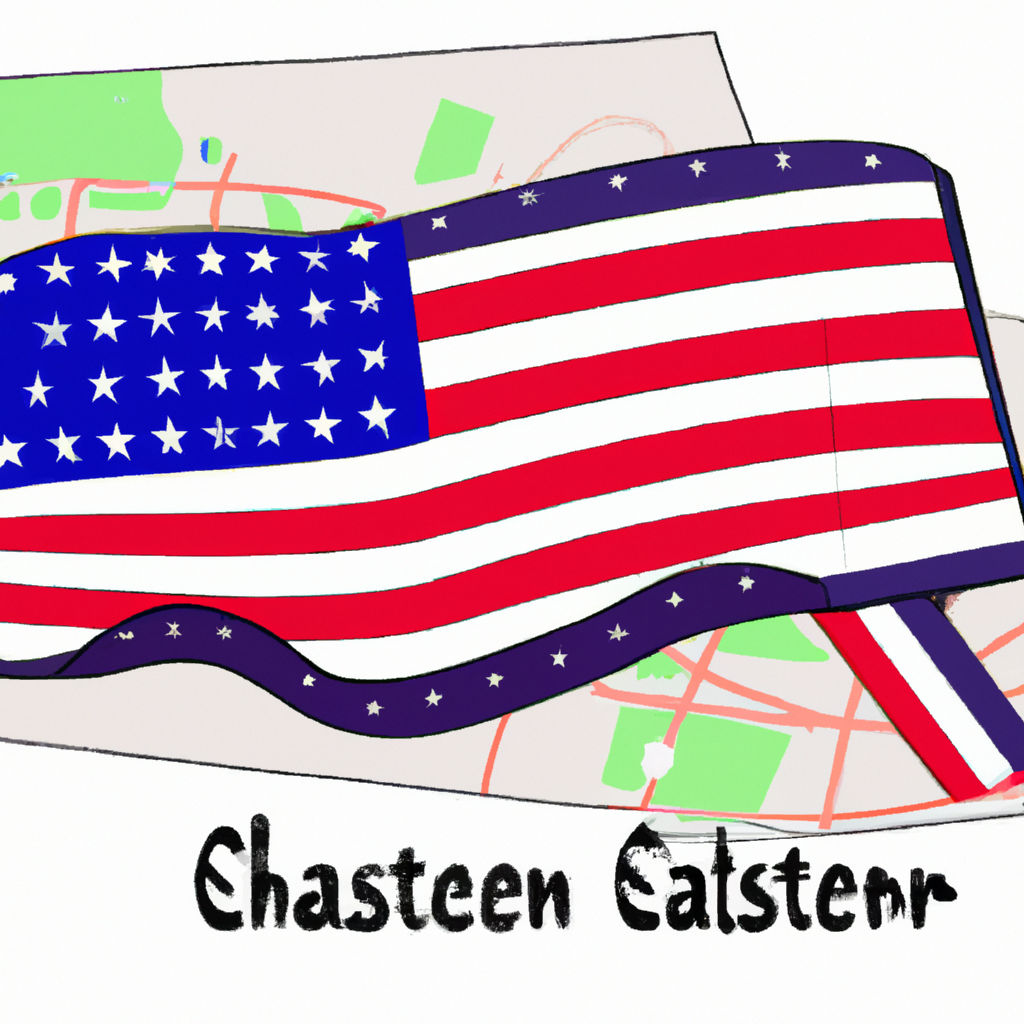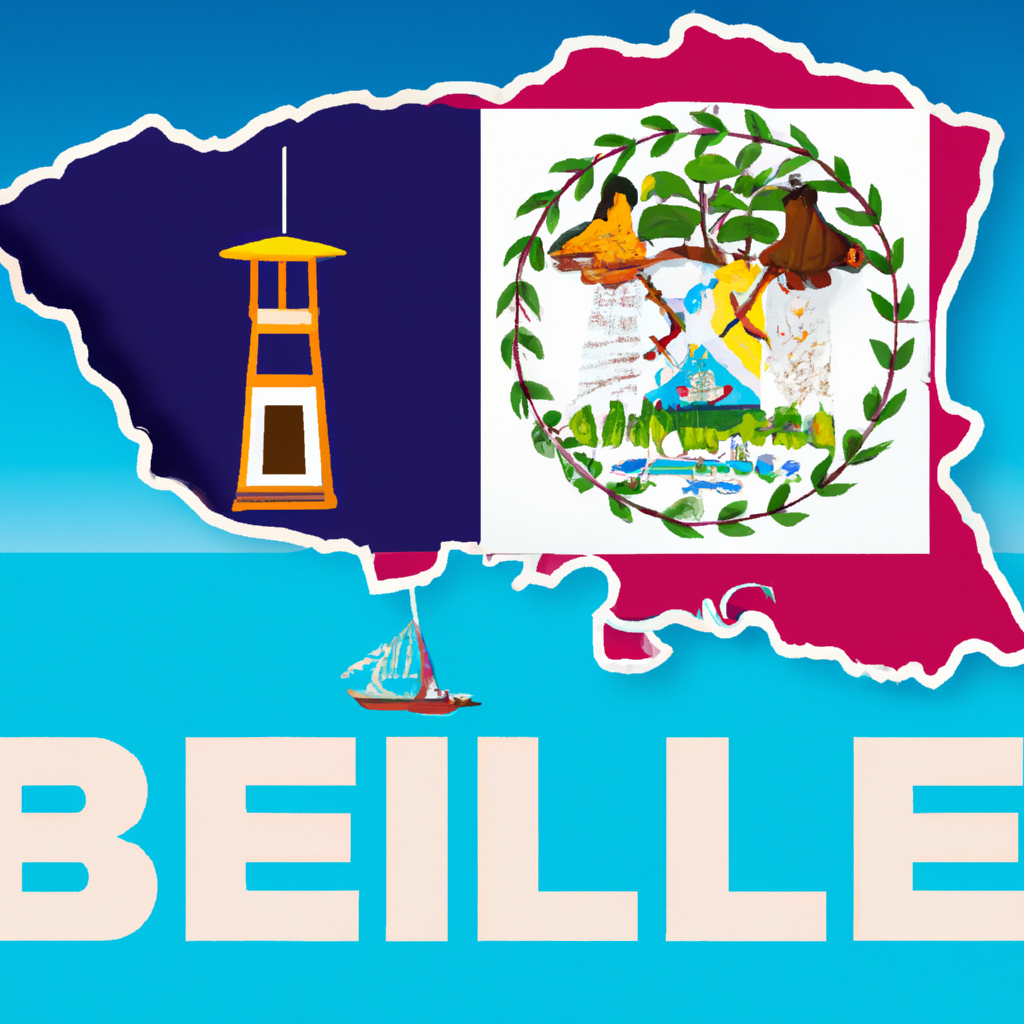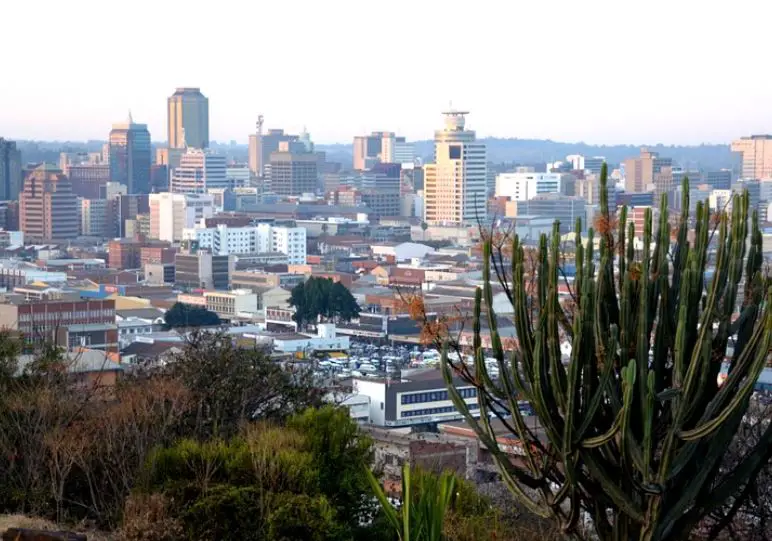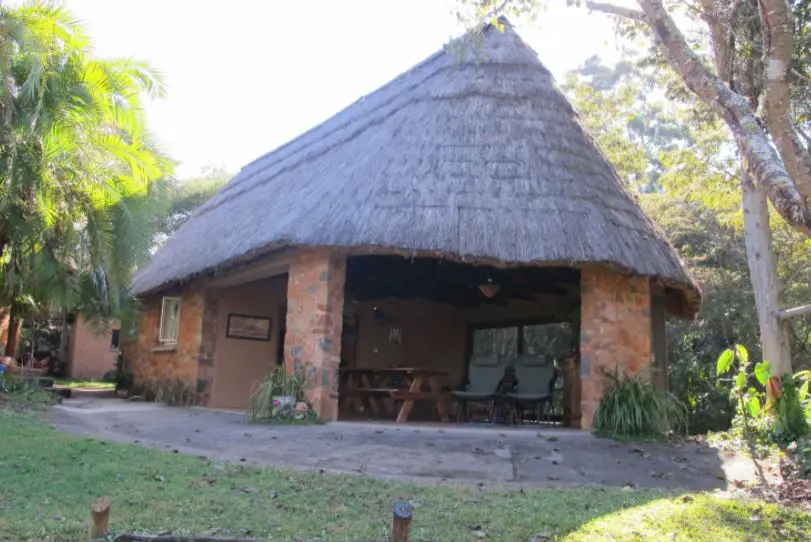Victoria Falls, Zimbabwe/Zambia: Interesting Facts,History, Things to do,Why to Visit
Post ByAdequate Travel
The world’s largest waterfall, Victoria Falls is located between the countries of Zimbabwe and Zambia. Its a breathtaking sight to behold and a marvel of nature. With its rugged terrain and gorgeous landscape, witness the amazing power of nature at this stunning location. The roaring noise of the incredibly powerful waterfall will leave you in awe. Learn about its fascinating history, interesting facts, and what sights and activities you can explore while there. Whether its hiking, biking or even sailing over the abyss, Victoria Falls has something to offer everyone. Discover why its one of the most visited tourist spots in Africa and plan your holiday trip.
Zimbabwe is a landlocked country located in southern Africa, known for its diverse wildlife, dramatic landscapes, and cultural heritage. Once a prosperous nation, Zimbabwe has faced significant economic and political challenges in recent decades.The country gained independence from British rule in 1980, transitioning to an independent government led by Robert Mugabe. Initially, Zimbabwe experienced progress in education, health, and infrastructure development. However, Mugabe's presidency became increasingly authoritarian, marked by human rights abuses, economic mismanagement, and controversial land reforms. His policies resulted in hyperinflation, high unemployment rates, and widespread poverty.In 2017, after a military intervention, Mugabe was forced to resign, resulting in the ascension of Emmerson Mnangagwa as the new president. Mnangagwa promised to revive the economy and improve governance but faced skepticism due to his close association with Mugabe's regime.Zimbabwe's economy primarily relies on agriculture, mining (particularly gold and diamonds), and tourism. However, economic crises, corruption, and a challenging business environment have hindered development and foreign investment.Despite its challenges, Zimbabwe offers stunning natural attractions like Victoria Falls, Hwange National Park, Matobo National Park, and Great Zimbabwe ruins. The country also boasts a rich cultural heritage, with diverse ethnic groups and traditional customs.As of 2021, Zimbabwe continues to grapple with economic instability, political uncertainty, and issues of corruption and human rights abuses. However, efforts to revitalize the economy and improve governance are ongoing, offering hope for a brighter future.Step back in time as you visit the historical sites in zimbabwe, where the past comes alive.
Interesting facts
Historical Background
Zimbabwe, officially known as the Republic of Zimbabwe, is a landlocked country located in southern Africa. It gained independence from British colonial rule on April 18, 1980. The country has a rich and complex history with evidence of human habitation dating back over 100,000 years.
Impressive Natural Wonders
Zimbabwe is known for its stunning natural beauty and boasts several remarkable natural wonders. One such wonder is the majestic Victoria Falls, one of the largest waterfalls in the world. It is located on the Zambezi River and is a UNESCO World Heritage Site. Another fascinating natural feature is Lake Kariba, one of the largest artificial lakes in the world, formed by the Kariba Dam on the Zambezi River.
Diverse Wildlife
Zimbabwe is home to a diverse range of wildlife and has a number of national parks and game reserves. Hwange National Park, for example, is the largest national park in the country and is renowned for its large elephant population. Mana Pools National Park, located along the Zambezi River, is known for its abundant wildlife, including hippos, crocodiles, and a wide variety of bird species. Zimbabwe is also famous for its efforts in rhino conservation, with several successful breeding programs in place.
Historical Ruins and Ancient Cities
Zimbabwe has several fascinating historical ruins and ancient cities that provide insight into the country's rich past. Great Zimbabwe, a UNESCO World Heritage Site, is an ancient city that was the capital of the Kingdom of Zimbabwe during the 11th to 15th centuries. The ruins are remarkable, with intricate stone structures and walls that were built without mortar. The ruins of Khami and Dhlo-Dhlo are also significant archaeological sites that offer a glimpse into Zimbabwe's past civilizations.
Cultural Diversity
Zimbabwe is a country with a diverse range of ethnic groups, each contributing to the country's vibrant culture. The two largest ethnic groups are the Shona and the Ndebele, but there are also smaller groups such as the Tonga, Venda, and Kalanga. The country celebrates its cultural diversity through various festivals, dances, and art forms, such as the Mbira music and the intricate stone sculptures for which Zimbabwe is well-known.
Overall, Zimbabwe offers a fascinating blend of history, natural beauty, and cultural diversity. From ancient ruins to breathtaking natural wonders, this country has much to offer both locals and visitors alike.From museums to parks,zimbabwe tourist attractions offer something for everyone, making it a versatile destination for all type of tourists.History of Zimbabwe
Zimbabwe, officially known as the Republic of Zimbabwe, is a landlocked country located in southern Africa. The history of Zimbabwe dates back to ancient times, with evidence of human habitation dating back at least 100,000 years. The region has been inhabited by various tribes and civilizations, each leaving their mark on the country's history.
The Great Zimbabwe Kingdom
One of the most notable periods in Zimbabwe's history is the rise of the Great Zimbabwe Kingdom in the 11th century. The Great Zimbabwe ruins, which are located in present-day Masvingo Province, were once the center of this powerful kingdom. The ruins consist of impressive stone walls and structures that served as palaces, religious centers, and administrative buildings.
Colonization and British Rule
In the late 19th century, Zimbabwe, then known as Rhodesia, became a British colony. The British South Africa Company, under the leadership of Cecil Rhodes, played a significant role in the colonization of the region. The British established control and initiated policies that favored the white minority population, leading to racial tensions and inequality.
Independence and Robert Mugabe
Zimbabwe gained its independence from British rule on April 18, 1980. Robert Mugabe, a prominent leader of the liberation movement, became the country's first prime minister and later its president. Mugabe's rule, which lasted for several decades, was characterized by political repression, economic mismanagement, and human rights abuses.
Land Redistribution and Economic Crisis
One of the defining moments in Zimbabwe's recent history was the implementation of the Land Redistribution Program in the early 2000s. The government, under Mugabe's leadership, aimed to address the historical imbalances in land ownership by redistributing land from white farmers to black Zimbabweans. However, the program was marred by controversy, violence, and economic decline.
Transition and Current Situation
In November 2017, Robert Mugabe resigned as president following a military intervention, leading to a transition of power. Emmerson Mnangagwa, a former vice president, assumed the presidency and promised to revive the economy, promote investment, and improve governance. Zimbabwe continues to face numerous challenges, including high unemployment, poverty, political instability, and human rights concerns.
Example points about history of Zimbabwe:
1. Ancient habitation:
- Zimbabwe has evidence of human habitation dating back at least 100,000 years.
- Various tribes and civilizations have inhabited the region throughout history.
2. The Great Zimbabwe Kingdom:
- The rise of the Great Zimbabwe Kingdom in the 11th century is a notable period in Zimbabwe's history.
- The Great Zimbabwe ruins served as the center of this powerful kingdom.
3. Colonization and British Rule:
- Zimbabwe became a British colony in the late 19th century, known as Rhodesia.
- The British South Africa Company played a significant role in colonization.
4. Independence and Robert Mugabe:
- Zimbabwe gained independence from British rule in 1980.
- Robert Mugabe became the country's first prime minister and later its president.
5. Land Redistribution and Economic Crisis:
- The Land Redistribution Program in the early 2000s aimed to address historical imbalances in land ownership.
- The program led to controversy, violence, and economic decline.
6. Transition and Current Situation:
- Robert Mugabe resigned in 2017, leading to a transition of power to Emmerson Mnangagwa.
- Zimbabwe continues to face challenges such as high unemployment, poverty, and political instability.
Exploring the rich heritage of historical sites in zimbabwe is a journey through time and culture.Famous Things of Zimbabwe
Natural Wonders
Zimbabwe is home to several natural wonders that draw visitors from all over the world. One of the most famous natural attractions is Victoria Falls, located on the border of Zimbabwe and Zambia. It is one of the largest waterfalls in the world and is known for its breathtaking views and the sheer power of the water cascading over the precipice. Additionally, Zimbabwe boasts beautiful national parks such as Hwange National Park, Mana Pools National Park, and Matobo National Park, where visitors can witness diverse wildlife and stunning landscapes.Historical Sites
Zimbabwe has a rich history, and there are several notable historical sites throughout the country. Great Zimbabwe is a UNESCO World Heritage Site and was once the capital of the Kingdom of Zimbabwe, dating back to the 11th century. The ruins of this ancient city are an impressive testament to the advanced civilization that existed at that time. Another famous historical site is the Khami Ruins, which are the remains of a medieval city that was once the capital of the Kingdom of Butua.Cultural Heritage
Zimbabwe has a vibrant cultural heritage that is celebrated through various traditions and festivals. The country is known for its intricate stone sculptures, which are created by talented local artists. These sculptures often depict animals, people, or cultural symbols and have gained international recognition. The annual Harare International Festival of the Arts (HIFA) is another notable cultural event that showcases music, performance arts, and visual arts from Zimbabwe and around the world.Growth of Tourism
Zimbabwe's tourism industry has been growing in recent years, attracting both local and international visitors. The country offers a range of activities, such as game drives, walking safaris, birdwatching, and adventure sports like whitewater rafting in the Zambezi River. Tourists can also explore the vibrant city life in Harare, the capital of Zimbabwe, which offers a mix of modern amenities and cultural experiences.Notable Personalities
Zimbabwe is proud of its many notable personalities who have achieved recognition in various fields. One example is Oliver Mtukudzi, a renowned musician and singer-songwriter who is known for his unique blend of traditional and contemporary music. Another notable figure is the late Dambudzo Marechera, a celebrated writer whose works have made a significant impact in the literary world. These individuals and many more contribute to the rich cultural fabric of Zimbabwe.Discover some unique facts about zimbabwe that will leave you amaze and intrigue.Culture of Zimbabwe
The culture of Zimbabwe is a diverse and vibrant mix of various tribal traditions, colonial influences, and contemporary elements. The country's cultural heritage is an integral part of its national identity and is depicted through traditional practices, art, music, dance, cuisine, and fashion.
1. Tribal Influences:
Zimbabwe is home to various ethnic groups, each with its unique customs and traditions. Some of the prominent tribes include the Shona, Ndebele, Tonga, and Manyika. These tribes have distinct languages, rituals, and social systems that contribute to the rich cultural tapestry of Zimbabwe.
2. Colonial Legacy:
The country was colonized by the British in the 19th century, leading to the substantial influence of Western customs and traditions. English is widely spoken, and elements of British culture, such as tea-drinking, sport activities like cricket and rugby, and architectural styles, can be observed in urban areas.
3. Traditional Arts and Crafts:
Zimbabwean arts and crafts are renowned for their intricate designs and skilled craftsmanship. Stone sculptures, pottery, basket-weaving, and woodcarvings are among the traditional art forms practiced by various tribes. These works often depict themes from everyday life, spiritual beliefs, and wildlife.
4. Music and Dance:
Music and dance hold significant importance in Zimbabwean culture. Traditional music includes drumming, mbira (thumb piano) melodies, and singing. The mbira, a widely recognized instrument in Zimbabwe, is commonly played during spiritual ceremonies and social gatherings. Traditional dance forms like the Jerusarema and Mbende showcase the energetic movements and vibrant attire of the dancers.
5. Cuisine and Hospitality:
Zimbabwean cuisine is a fusion of traditional dishes and colonial influences. Staple foods include sadza (a porridge-like dish made from maize), meat stews, and vegetables. Local delicacies like biltong (dried and cured meat) and kapenta (small fish) are also popular. Zimbabweans are known for their warm hospitality and typically offer guests food or drink as a sign of welcome.
Overall, Zimbabwean culture is a dynamic blend of tribal customs, traces of British colonial history, and contemporary influences. It celebrates the country's rich heritage while embracing modern elements, creating a unique cultural identity.Immerse yourself in the local culture by exploring zimbabwe's top-rated tourist attractions.Cuisine of Zimbabwe
The cuisine of Zimbabwe is a combination of traditional African flavors and influences from neighboring countries such as South Africa, Mozambique, and Zambia. Zimbabwean cuisine is characterized by its use of maize (corn), meat, and a wide variety of vegetables.
Main Ingredients
- Maize: Maize is the staple food of Zimbabwe and is used in various forms such as sadza (a thick porridge made from maize meal), cornbread, and as a side dish. It is often served with relishes such as meat, vegetables, or beans.
- Meat: Zimbabweans enjoy a variety of meats, including beef, chicken, goat, and fish. These meats are commonly used in stews, grilled dishes, and as fillings for pies.
- Vegetables: Zimbabwean cuisine incorporates a diverse range of vegetables, including leafy greens such as collard greens and spinach, pumpkin leaves, beans, and okra. These vegetables are often stewed or sautéed and served alongside the main dishes.
Popular Dishes
- Sadza: Sadza is the most common and popular dish in Zimbabwe. It is a thick porridge made from maize meal and typically served with a variety of relishes such as meat, vegetables, or beans.
- Nyama Choma: Nyama Choma is a grilled meat dish that is popular in Zimbabwe. It is usually made from beef or chicken and marinated in a flavorful sauce before being grilled to perfection.
- Dovi: Dovi is a peanut stew that is commonly enjoyed in Zimbabwe. It is made with meat (usually chicken or beef), tomatoes, onions, and peanut butter. Dovi is often served with sadza or rice.
- Muriwo Unedovi: Muriwo Unedovi is a traditional vegetable dish that consists of greens, often spinach or collard greens, cooked with tomatoes, onions, and peanut butter. It is a flavorful and nutritious side dish that pairs well with sadza or rice.
Influences from Neighboring Countries
Zimbabwean cuisine has been influenced by its neighboring countries, resulting in the inclusion of dishes such as:
- Bunny Chow (South African influence): Bunny Chow is a popular street food in Zimbabwe, originally from South Africa. It consists of a hollowed-out loaf of bread filled with curry, typically made with meat and vegetables.
- Piri Piri Chicken (Mozambican influence): Piri Piri chicken is a spicy grilled chicken dish that originated in Mozambique. It has become a favorite in Zimbabwe, with variations that incorporate local spices and flavors.
- Nshima (Zambian influence): Nshima is a similar dish to sadza and is a staple food in Zambia. It is made from maize meal and served with various relishes, similar to sadza in Zimbabwe.
Overall, the cuisine of Zimbabwe offers a diverse range of flavors and dishes that reflect the country's rich culinary heritage and influences from neighboring countries. From the staple dish of sadza to the flavorful stews, grilled meats, and vegetable dishes, Zimbabwean cuisine is a delightful blend of traditional African flavors and global influences.
zimbabwe tourist attractions offer a diverse range of experiences for every traveler.Explore Victoria Falls
Victoria Falls is one of the most significant natural wonders in Zimbabwe and should not be missed. Located on the border between Zimbabwe and Zambia, it is the largest waterfall in the world and offers breathtaking views. Visitors can take a guided tour to explore the falls from various perspectives, including walking across the famous Victoria Falls Bridge or taking a scenic helicopter ride above the falls.
Example activities to do at Victoria Falls:
- Take a guided tour to witness the beauty of the falls up close
- Embark on a thrilling whitewater rafting adventure on the Zambezi River, which provides an adrenaline rush
- Go on a wildlife safari in the nearby Zambezi National Park to spot animals like elephants, lions, and rhinos
- Engage in bungee jumping or ziplining to experience an exhilarating thrill in a stunning environment
Visit Hwange National Park
Hwange National Park is the largest national park in Zimbabwe and home to a wide range of wildlife, including elephants, lions, buffalos, and various bird species. Exploring this park allows visitors to immerse themselves in the African wilderness while enjoying game drives and guided walks.
Example activities to do in Hwange National Park:
- Embark on a guided safari to witness animals in their natural habitat
- Stay in a luxury safari lodge or campsite and engage in breathtaking star gazing experiences at night
- Take part in walking safaris led by experienced guides to have a closer and more intimate wildlife encounter
- Visit the Painted Dog Conservation Centre, located near the park entrance, to learn about and see the endangered African wild dog species
Explore Great Zimbabwe
Great Zimbabwe is an ancient city and historical site that showcases the rich cultural heritage and architectural marvels of Zimbabwe. This UNESCO World Heritage Site is a testament to the country's rich history and civilization. Exploring the ruins and learning about the fascinating history of Great Zimbabwe is a must for history enthusiasts.
Example activities to do at Great Zimbabwe:
- Take a guided tour of the ruins to learn about their significance and historical context
- Visit the on-site museum to explore artifacts and gain a deeper understanding of the culture and civilization of the ancient city
- Enjoy panoramic views of the surrounding landscape from the top of the Great Enclosure
- Participate in cultural events or festivals that sometimes take place at the site to experience traditional Zimbabwean music, dance, and cuisine
Go on a Safari in Mana Pools National Park
Mana Pools National Park is known for its exceptional wildlife and stunning landscapes along the Zambezi River. This park offers incredible opportunities for wildlife sightings and outdoor adventures, such as canoeing, walking safaris, and game drives, making it a popular choice for nature lovers.
Example activities to do in Mana Pools National Park:
- Embark on a guided canoe safari along the Zambezi River, where visitors can spot wildlife while enjoying a unique perspective from the water
- Take part in a walking safari, accompanied by experienced guides, to explore the park on foot and have a deeper connection with nature
- Experience thrilling game drives to witness animals such as elephants, buffalo, lions, and various bird species
- Engage in fishing activities in the river, allowing visitors to enjoy a peaceful and leisurely adventure
Climate of Zimbabwe
Zimbabwe has a subtropical highland climate, characterized by relatively mild temperatures throughout the year. The country experiences distinct seasons, with dry winters and wet summers. The climate is influenced by its high elevation, topography, and proximity to the Indian Ocean and Zambezi River.
Seasonal Variations
1. Summer (November to March): The summer season in Zimbabwe is marked by high temperatures and heavy rainfall. This period is also characterized by frequent thunderstorms and high humidity. Maximum temperatures can reach up to 30°C (86°F), while minimum temperatures remain around 15°C (59°F).
2. Autumn (April and May): During autumn, the temperatures start to cool down, providing relief from the summer heat. Rainfall decreases, and the landscape begins to transition into a dry season.
3. Winter (June to August): Winter in Zimbabwe is dry and mild, with pleasant temperatures during the day and cooler temperatures at night. Average maximum temperatures range from 20°C (68°F) to 25°C (77°F), and minimum temperatures can drop to around 6°C (43°F) in some areas.
4. Spring (September and October): Spring brings a gradual increase in temperatures, with blossoming flowers and a return of greenery. Rainfall slightly increases during this period, leading to a greener landscape.
Regional Variations
1. Eastern Highlands: The Eastern Highlands region experiences cooler temperatures due to its higher elevation. It receives more rainfall throughout the year, leading to lush vegetation and picturesque landscapes.
2. Zambezi Valley: Located in the northern region of Zimbabwe, the Zambezi Valley has hot and humid summers with high rainfall. Winters are warm and dry, making it an ideal destination for wildlife enthusiasts.
3. Kariba: The Kariba region has a more arid climate, with hot and dry weather during the summer months. It is known for Lake Kariba, which provides recreational opportunities and sustains diverse aquatic life.
Impact on Agriculture
The climate in Zimbabwe plays a crucial role in shaping the country's agricultural productivity. The rainy season is vital for farming, as it supports crop growth and contributes significantly to the country's economy. However, excessive rainfall or drought can both pose challenges for farmers, leading to reduced yields and food shortages.
It is important for farmers in Zimbabwe to adapt to the changing climate patterns and implement sustainable farming practices to mitigate the impact of climate fluctuations on their crops and livelihoods.
Step back in time as you visit the historical sites in zimbabwe, where the past comes alive.Popular Activities in Zimbabwe
There are numerous popular activities to engage in when visiting Zimbabwe. Some of these activities include:
1. Safari
Zimbabwe is renowned for its rich wildlife and diverse ecosystems, making it an excellent destination for safari experiences. Visitors can explore national parks such as Hwange National Park, Mana Pools National Park, and Matobo National Park, where they can witness majestic African elephants, lions, buffaloes, zebras, and many other animal species in their natural habitats.
2. Victoria Falls
One of the most iconic attractions in Zimbabwe, Victoria Falls offers breathtaking views and thrilling activities. Visitors can embark on guided tours to witness the majestic waterfalls up close, go white-water rafting on the Zambezi River, or even take a scenic helicopter ride over the falls.
3. Cultural Encounters
Immersing in Zimbabwe's diverse and vibrant culture is another popular activity. Visitors can visit local villages, interact with the warm and hospitable locals, and learn about traditional customs, music, dance, and crafts. The Great Zimbabwe Ruins, an ancient city that provides insights into the country's history, is also a popular cultural attraction.
4. Adventure Sports
Zimbabwe offers a range of adrenaline-pumping activities for adventure enthusiasts. One can go bungee jumping off the Victoria Falls Bridge, zip-lining through lush forests, or partake in thrilling game drives and walking safaris. The country's rivers also provide opportunities for canoeing, kayaking, and fishing.
5. Bird Watching
Zimbabwe is a paradise for birdwatchers, with over 670 bird species inhabiting its diverse landscapes. The Eastern Highlands, especially areas like Nyanga and Vumba, offer excellent birding opportunities. Bird enthusiasts can spot species such as the African Fish Eagle, Lilian's Lovebird, and the endangered Taita Falcon.
6. Wine Tasting and Food Tours
Zimbabwe is gradually earning recognition for its wine production. Wine tasting tours in the scenic eastern highlands offer visitors the chance to sample locally produced wines. Additionally, food tours allow tourists to indulge in Zimbabwean cuisine, which combines local ingredients with influences from various cultures, resulting in unique flavors.
In conclusion, Zimbabwe offers a wide range of popular activities for visitors to enjoy. From exciting safaris and jaw-dropping natural wonders to rich cultural encounters and thrilling adventures, the country caters to various interests. Whether it is wildlife, history, culture, or adrenaline-pumping activities, Zimbabwe has something for everyone.
Plan your trip with a list of the best things to do in zimbabwe, catering to all interests.Nightlife in Zimbabwe
When it comes to nightlife, Zimbabwe has a vibrant scene that caters to different tastes and interests. Here are some key points to consider:
1. Harare
In Zimbabwe's capital city, Harare, you'll find a variety of options for an exciting night out. The city has numerous bars, clubs, and lounges that offer different atmospheres and music genres. For example, the upscale Borrowdale suburb is known for its trendy bars and clubs such as Pablo'z, which hosts live music and DJ nights.
2. Victoria Falls
Victoria Falls, one of the country's most popular tourist destinations, also offers an enjoyable nightlife experience. The area has a range of bars and restaurants that cater to both locals and visitors. One popular spot is the bustling Shearwater Cafe, known for its lively atmosphere and occasional live performances.
3. Bulawayo
Bulawayo, Zimbabwe's second-largest city, is home to a diverse nightlife scene. The city offers a mix of traditional drinking spots and modern entertainment venues. One example is the popular joint named Horizon Bar, known for its energetic atmosphere, live music, and delicious food.
4. Casinos
In several major cities in Zimbabwe, including Harare and Victoria Falls, you'll find casinos that provide thrilling nighttime entertainment. These establishments offer a variety of games such as blackjack, roulette, and slot machines. Examples include the Regency Casino in Harare and Elephant Hills Casino in Victoria Falls.
5. Cultural Experiences
For those looking for a unique and cultural nightlife experience, Zimbabwe offers a range of options. Traditional African dancing and music performances can be enjoyed at venues like the Book Café in Harare. These events provide an opportunity to immerse oneself in Zimbabwean culture while enjoying a night out.
6. Safety Precautions
While enjoying the nightlife in Zimbabwe, it's essential to take necessary safety precautions. Be cautious of your surroundings, avoid walking alone at night in unfamiliar areas, and arrange for reliable transportation. It's always a good idea to heed advice from locals or trusted sources to ensure a safe and enjoyable night out.
Discover the untold stories behind zimbabwe unique facts, and historical treasures.Reasons to Visit Zimbabwe
1. Natural Beauty:
Zimbabwe is renowned for its stunning landscapes and natural beauty. From the impressive Victoria Falls and the mighty Zambezi River to the vast wildlife reserves and picturesque national parks, the country offers a diverse range of natural attractions. For instance, Hwange National Park is one of Africa's largest game reserves, where visitors can spot the Big Five (elephants, lions, leopards, buffaloes, and rhinos) and numerous other species. Matobo National Park is famous for its unique rock formations and ancient cave paintings, while Mana Pools National Park boasts breathtaking views of the Zambezi River and abundant wildlife.
2. Wildlife Safaris:
Zimbabwe is a paradise for wildlife enthusiasts and offers exceptional game viewing opportunities. Whether you choose to explore the country's national parks or embark on a luxurious safari, you'll have the chance to see a wide variety of African wildlife up close. In addition to the Big Five, Zimbabwe is home to cheetahs, wild dogs, giraffes, zebras, hippos, crocodiles, and an array of bird species. The country's diverse ecosystems support a rich biodiversity, making it a prime destination for nature lovers.
3. Victoria Falls:
Victoria Falls is one of the most iconic natural wonders of the world and a must-visit attraction in Zimbabwe. Situated on the border between Zimbabwe and Zambia, the falls are the largest waterfall in terms of height and width. The majestic curtain of water plunges into the Zambezi River, creating a breathtaking spectacle. Visitors can enjoy various activities around Victoria Falls, such as white-water rafting, bungee jumping, helicopter tours, and sunset cruises, providing an adrenaline-fueled and unforgettable experience.
4. Rich Cultural Heritage:
Zimbabwe is a country with a fascinating and diverse cultural heritage. The ruins of Great Zimbabwe, a UNESCO World Heritage Site, provide a glimpse into the ancient civilization that once thrived in the region. These impressive stone structures are believed to have been built between the 11th and 15th centuries and are a testament to the advanced architectural skills of the Kingdom of Zimbabwe. The country's modern culture is also vibrant and colorful, with traditional music, dance, and artwork adding to the cultural richness.
5. Adventure Activities:
For those seeking excitement and adventure, Zimbabwe offers a plethora of outdoor activities. Apart from the adrenaline-inducing experiences near Victoria Falls, such as bungee jumping and white-water rafting, you can also go canoeing in the Zambezi River, embark on thrilling walking safaris, or take hot air balloon rides over scenic landscapes. The country's diverse terrain and natural resources provide ample opportunities for hiking, fishing, rock climbing, and much more.
Overall, Zimbabwe is a captivating destination that offers a perfect blend of natural wonders, wildlife experiences, cultural heritage, and adventure activities. Whether you are looking for adrenaline-pumping adventures or peaceful encounters with nature, Zimbabwe has something to offer for every traveler.Whether you're a history buff or an adventure seeker, zimbabwe has an attraction for you. So, don't miss the chance to visit popular places in zimbabweNumber of Days Required to Visit Zimbabwe
Visiting Zimbabwe can be an exciting and enriching experience, as the country offers a diverse range of attractions including wildlife, cultural heritage sites, and natural wonders. The number of days required to explore Zimbabwe depends on various factors such as the places you want to visit, activities you want to engage in, and your travel preferences.Here are some factors to consider when determining the number of days required to visit Zimbabwe:1. Itinerary
Creating a detailed itinerary is essential for planning your trip. Research the attractions and destinations you want to visit in Zimbabwe and estimate the time needed to explore each place. For example:
- Victoria Falls: Plan at least 2-3 days to fully experience the grandeur of this iconic waterfall. Activities such as guided tours, helicopter rides, and river cruises can be included.
- Hwange National Park: If you are interested in wildlife, allocate 2-3 days for game drives and encountering various species of animals.
- Great Zimbabwe Ruins: To explore the ancient ruins and learn about Zimbabwe's history, set aside a day or two.
- Matobo National Park: For hiking, rock art exploration, and experiencing cultural history, allocate 1-2 days.
2. Distance and Transportation
Zimbabwe is a vast country, and the time required for traveling between destinations should be considered. The condition of roads and transportation options available can impact the efficiency of your trip. For instance:
- If you plan to travel from Victoria Falls to Hwange National Park, it may take around 3-4 hours by road. Consider this travel time when planning your itinerary.
- Internal flights can be a time-saving option for covering long distances. If you want to visit multiple regions, including destinations like Mana Pools or Gonarezhou National Park, consider incorporating flights into your itinerary.
3. Personal Preferences
Your individual travel preferences and interests will also influence the duration of your visit. If you enjoy a leisurely pace and want to immerse yourself in the local culture, you may need more time. However, if you prefer a more fast-paced trip focused on specific highlights, you may require fewer days.
Remember to consider additional time for activities like relaxation, shopping, and exploring local markets. Depending on the richness of your itinerary and the time you have available, a suggested minimum duration to visit Zimbabwe would be around 7-10 days. However, if you have more time, extending your stay to 2-3 weeks would allow you to experience more of what the country has to offer.Overall, it is important to plan your Zimbabwe visit according to your interests, prioritize your must-see attractions, and allocate sufficient time to fully enjoy each destination. Adapt the suggested durations mentioned above to create a personalized itinerary that suits your preferences and ensures an unforgettable experience in Zimbabwe.Uncover the best zimbabwe attractions that will leave you awe-inspired and wanting more.Significance of Zimbabwe
Zimbabwe, a landlocked country located in southern Africa, holds significant historical, cultural, and natural importance. It has a rich and diverse heritage that contributes to its significance in various aspects:
1. Historical Significance
Zimbabwe has a long and complex history dating back to ancient times. From the Great Zimbabwe ruins, a UNESCO World Heritage Site, to the Kingdom of Mapungubwe, the country showcases its historical significance through its archaeological sites and ancient artifacts.
2. Cultural Significance
The country's cultural significance lies in its diverse ethnic groups and their traditions. The Shona and Ndebele tribes, in particular, have greatly influenced the country's cultural heritage with their art, music, dance, and traditional ceremonies.
3. Natural Significance
Zimbabwe boasts a remarkable range of diverse landscapes and natural wonders. The famous Victoria Falls, one of the Seven Natural Wonders of the World, attracts visitors from around the globe. It also encompasses national parks such as Hwange National Park, Mana Pools National Park, and Matobo National Park, where tourists can explore breathtaking wilderness and encounter diverse wildlife.
4. Economic Significance
Zimbabwe has significant economic importance due to its abundant mineral resources, including gold, platinum, and diamonds. These resources attract international investments and contribute to the country's economy.
5. Political Significance
Zimbabwe holds political significance as a former British colony and its subsequent struggle for independence. With its political history shaping the nation's identity, Zimbabwe serves as a case study for understanding African politics and post-colonial development.
To summarize, Zimbabwe's significance lies in its historical, cultural, natural, economic, and political aspects. From its ancient ruins to its vibrant culture, diverse landscapes, valuable mineral resources, and political evolution, Zimbabwe offers a multifaceted tapestry that captivates both locals and visitors alike.From hidden gems to iconic landmarks, zimbabwe has something for every traveler's taste.FAQ'S of Zimbabwe
1. What is the capital city of Zimbabwe?
The capital city of Zimbabwe is Harare. It is the largest city in the country and serves as the administrative, commercial, and communication center of Zimbabwe.
Example: Harare is home to various government offices, business headquarters, and educational institutions. It has a vibrant cultural scene and offers numerous attractions for tourists, such as the National Gallery of Zimbabwe and the Harare Gardens.
2. What is the official language of Zimbabwe?
The official language of Zimbabwe is English. It is widely spoken and used for official purposes, including government and business activities.
Example: English is the language of instruction in schools and universities, making it easier for international visitors to communicate and understand. However, the majority of Zimbabweans also speak local languages such as Shona and Ndebele.
3. What is the currency used in Zimbabwe?
The official currency of Zimbabwe is the Zimbabwean Dollar (ZWL), which was reintroduced in 2019. Prior to that, the country experienced a period of hyperinflation, leading to the suspension of the local currency.
Example: The use of foreign currencies, mainly the US Dollar and South African Rand, became prevalent during this time. However, it is advisable to check the current currency situation before traveling to Zimbabwe, as exchange rates and availability of different currencies can vary.
4. What are the popular tourist attractions in Zimbabwe?
Zimbabwe offers a range of captivating tourist attractions, including:
- Victoria Falls: A UNESCO World Heritage Site and one of the seven natural wonders of the world.
- Hwange National Park: Known for its diverse wildlife and large elephant herds.
- Great Zimbabwe: The ancient stone city and UNESCO World Heritage Site.
- Mana Pools National Park: A renowned wildlife conservation area with stunning landscapes.
- Matobo Hills: Rich in cultural and historical significance, known for its rock art and granite formations.
Example: These attractions offer scenic beauty, opportunities for safaris, adventure activities, and a chance to explore the cultural heritage of Zimbabwe.
5. Is it safe to travel to Zimbabwe?
Zimbabwe is generally a safe country to visit, but like any other destination, it is advisable to take certain precautions.
Example: It is recommended to stay informed about the local situation, follow the advice of authorities, and avoid isolated areas or traveling alone at night. Taking necessary health precautions, such as vaccinations and ensuring safe drinking water, is also important.
Discover unique facts about zimbabwe, a destination filled with rich history and natural beauty.
